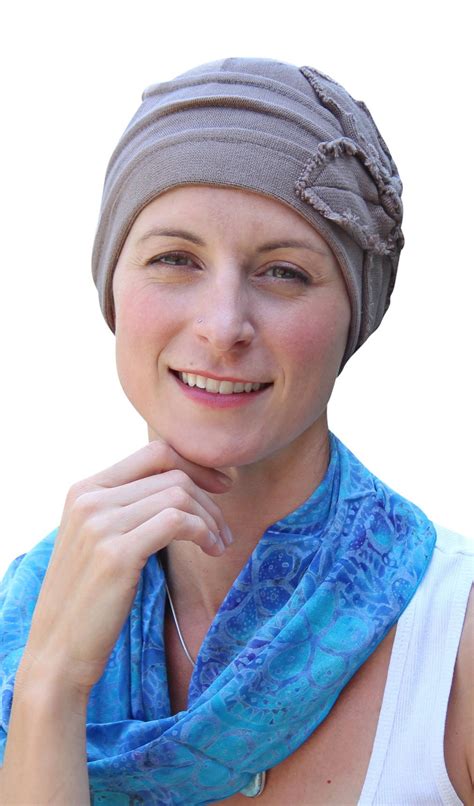Chemotherapy, a common treatment for cancer, often results in hair loss, which can be a distressing and emotionally challenging experience for patients. Fortunately, head coverings provide a practical and stylish solution, offering comfort, privacy, and a sense of normalcy during treatment.

Understanding the Impact of Chemotherapy on Hair
Chemotherapy drugs target rapidly dividing cells, including those in hair follicles. This leads to hair thinning, breakage, and ultimately, loss. The extent and timing of hair loss vary depending on the type of chemotherapy regimen and individual patient response.
According to the American Cancer Society, up to 90% of patients undergoing chemotherapy experience hair loss. Typically, hair loss begins within two to four weeks after starting treatment and progresses over several months.
The Importance of Head Coverings
Head coverings serve multiple purposes for chemotherapy patients:
- Comfort: Hair loss can cause scalp sensitivity and discomfort. Head coverings protect the scalp from sun, wind, and friction.
- Privacy: Hair loss can be an unwelcome and conspicuous sign of illness. Head coverings offer a sense of privacy and control.
- Style and Confidence: Losing hair can significantly impact one’s appearance and self-esteem. Head coverings provide a way for patients to express their individuality and maintain a sense of style.
Types of Head Coverings for Chemotherapy Patients
A vast array of head coverings is available, each with unique features and benefits.
1. Beanies
Beanies are comfortable, close-fitting caps that provide warmth and coverage. They come in various materials, including cotton, wool, and silk.
2. Scarves
Scarves are versatile and stylish head coverings that can be worn in multiple ways. They allow for airflow and can be easily adjusted for comfort.
3. Headwraps
Headwraps are fabric squares or turbans that can be tied in creative ways to create different looks. They offer full coverage and can be made from breathable materials.
4. Hats
Hats provide sun protection and warmth while adding a touch of style. They come in a wide variety of designs, including baseball caps, sun hats, and fedoras.
5. Wigs
Wigs offer a realistic and complete hair replacement solution. They can be made from synthetic or human hair and can be customized to match the patient’s original hair color and style.
Choosing the Right Head Covering
Selecting the right head covering depends on individual preferences, comfort level, and treatment regimen.
1. Consider Comfort: Choose materials that are soft, breathable, and non-irritating.
2. Determine Coverage: Decide whether you prefer full or partial coverage, and select a head covering that meets your needs.
3. Think Style: Choose head coverings that complement your personal style and make you feel good about yourself.
4. Consult a Specialist: Oncology nurses or beauticians can provide professional guidance and help you find the best head coverings for your individual situation.
Table 1: Types and Features of Head Coverings
| Head Covering Type | Materials | Coverage | Comfort | Style |
|---|---|---|---|---|
| Beanies | Cotton, wool, silk | Close-fitting | Good | Limited |
| Scarves | Cotton, silk, polyester | Versatile | Moderate | Good |
| Headwraps | Cotton, gauze, chiffon | Creative | Excellent | Good |
| Hats | Straw, canvas, denim | Partial | Good | Moderate |
| Wigs | Synthetic, human hair | Full | Good | Excellent |
Common Concerns and Solutions
1. Itching and Scalp Sensitivity: Use gentle hair care products and avoid harsh detergents. Consider using a scalp moisturizer or cooling compress.
2. Heat and Moisture Buildup: Choose breathable materials and avoid wearing head coverings for extended periods.
3. Loss of Confidence: Remember that hair loss is a temporary side effect of chemotherapy. Focus on your inner beauty and use head coverings as a way to express yourself.
Table 2: Tips for Managing Concerns
| Concern | Solution |
|---|---|
| Itching and scalp sensitivity | Use gentle hair care products, scalp moisturizer, or a cooling compress. |
| Heat and moisture buildup | Choose breathable materials, avoid wearing head coverings for extended periods. |
| Loss of confidence | Focus on inner beauty, use head coverings to express yourself. |
Stories from Chemotherapy Patients
“Losing my hair was a shock, but my beanie gave me a sense of comfort and normalcy. It made me feel like I could still be myself.” – Jessica, breast cancer survivor
“Headwraps empowered me to take control of my appearance. I could change my look every day and feel good about how I looked.” – Sarah, lymphoma patient
“My wig was a lifeline. It gave me the confidence I needed to face the world during treatment.” – Emily, ovarian cancer survivor
Table 3: Patient Experiences
| Patient | Head Covering Type | Impact |
|---|---|---|
| Jessica | Beanie | Comfort and normalcy |
| Sarah | Headwraps | Empowerment and control |
| Emily | Wig | Confidence |
The Future of Head Coverings for Chemotherapy Patients
Research and innovation are continuously improving the quality and comfort of head coverings for chemotherapy patients.
- Smart Head Coverings: Head coverings with built-in temperature control or sensors that detect scalp irritation.
- Customizable Head Coverings: 3D printing technology may enable patients to design and create personalized head coverings.
- Advanced Materials: New materials that are even more breathable, moisture-wicking, and hypoallergenic.
Table 4: Future Innovations
| Innovation | Potential Benefits |
|---|---|
| Smart Head Coverings | Temperature control, scalp irritation detection |
| Customizable Head Coverings | Personalized design, improved fit |
| Advanced Materials | Enhanced comfort, durability |
Conclusion
Head coverings are an essential part of the chemotherapy experience, providing comfort, privacy, and style. By understanding the impact of hair loss, choosing the right head covering, and managing common concerns, patients can maintain their confidence and well-being during treatment. As technology and innovation continue to advance, the future of head coverings for chemotherapy patients promises even greater comfort, empowerment, and individuality.
